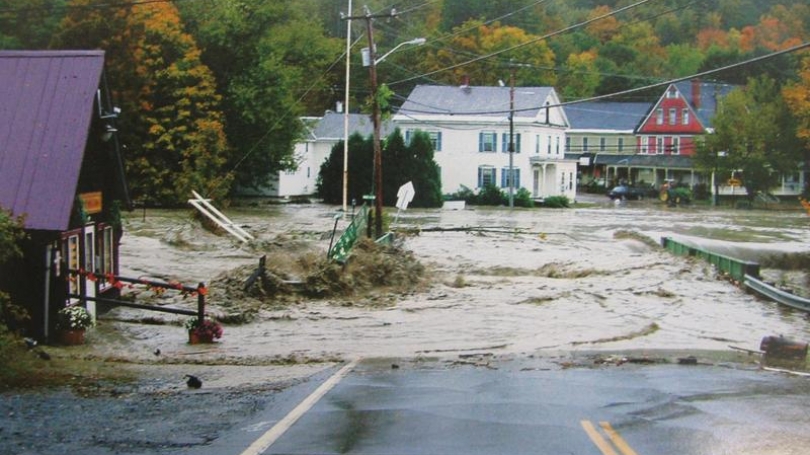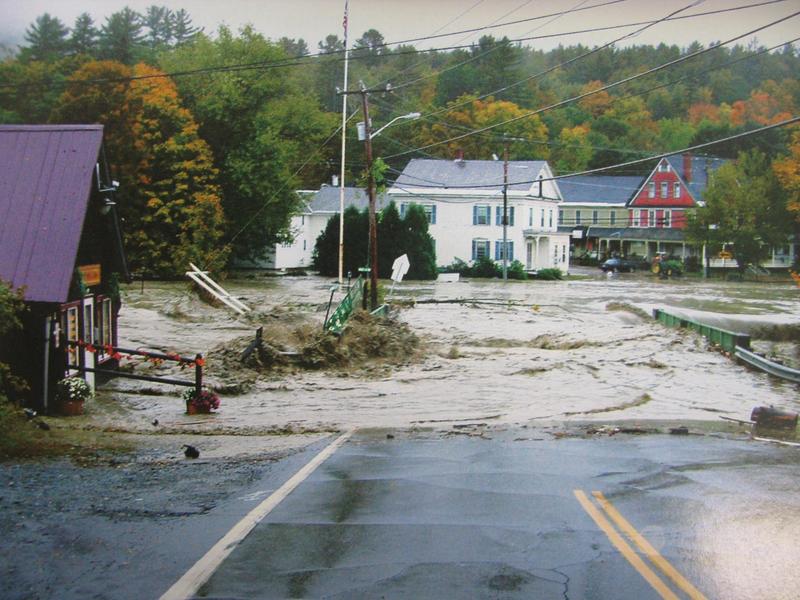In light of the recent hurricanes slamming the Gulf Coast and Southeastern United States, The Exchange spoke with Perry Plummer, Director of Homeland Security and Emergency Management, Jonathan Winter, a Dartmouth professor who has studied increasing precipitation over the last two decades in New England, and two engineers, Jim Gallagher, who specializes in dams, and Fred McNeill, who works in wastewater treatment, about how well New Hampshire is prepared for major weather events.
A study from Dartmouth College found that starting in 1996, the Northeast has had 50 percent more extreme precipitation than in previous years.
Jonathan Winter, one of the authors of the study, says:
The biggest jumps in extreme precipitation are in spring and fall, and they were both around 85 percent. So that's leading us down our next line of work, which is to see exactly what events are causing this increase in extreme precipitation. And our lead suspects for spring would be things like extra tropical cyclones [like Nor'easters].
And then, in the fall, we're fairly certain... that it's tropical cyclones causing more extreme precipitation... Now of course, we have a natural variability in our climate system. So there's nothing to say that this couldn't just be a particularly wet stretch of climate... But of course, there are also many reasons to think that climate change is contributing to this.
Jonathan Winter:
It's probably easiest to think of in terms of temperature. So, you have cold winters, you have warm winters, [but] overall, you have this kind of slow creep of increasing temperatures. And you put that on top of the cold winters and the warm winters. So yes, we will have droughts in the future, and yes, we will have wet times in the future but... our extreme precipitation events become worse, and our droughts become worse.
[As overall temperature rises] the air can hold more water, and dump it on us. It can also hold more water, and pass right over us. And also, warmer temperatures can drive more evaporation from the land surface. So, basically, what dries out our soil, you get more of that.
Perry Plummer, Director of Homeland Security and Emergency Management in New Hampshire, says that recent major storms, such as Hurricane Sandy, have caused widespread infrastructure issues.
Obviously, I don't we'll get a [Hurricane] Harvey in New Hampshire, but we are going to get 10 to 15 inches of rain. And that's going to challenge our infrastructure. We need to rebuild our infrastructure to protect our residents, protect our public... everything from roads and bridges to our electrical grid, to right down to all the things that provide service: wastewater treatment plants, our water treatment plants for drinking water, all those types of critical services we need...
It doesn't take a lot to contaminate a lot of water, because when you get widespread flooding, you're getting everything from fertilizers on lawns leaching out, and washing into our waterways... If you just drive down the road and look at eye level, and see all the different things there, if that was flooded area, it would leach into our water.
Jim Gallagher, Chief engineer of the Dam Bureau of the New Hampshire Department of Environmental Services, says that many dams in New Hampshire were built with spillways and abutments that can no longer accommodate the increase in precipitation.
What happens in these dams is the outworks, the spillways, only have so much capacity, and when these floods exceed that capacity, the water comes over the abutments of the dam and it can erode these abutments, which causes dams to fail...
[When these dams were built] there was a lack of understanding about hydrology back then, but even from, say, the 1980s to now, there's been increases in what the design for floods actually is...
Six inches of rain over a 20 or 32-hour period certainly could cause tremendous flooding.
Fred McNeill, an engineer in Manchester who works with wastewater infrastructure, says that many of the underground pipes are old, cracked, and susceptible to damage.
We do not have sufficient funding to update it all. No, we do not have the resources to do it. We struggle to replace and repair one or two miles of [underground pipes] a year...
When you have 250 miles of pipe [that is] over 100 years old, and you do two or three or four miles a year, you're never going to catch up.
Plummer says that the best thing people can do in extreme weather is be prepared to wait for services they normally can get much more quickly.
We ask all of our residents to be prepared for anything for 72 hours. So that means you need food, water, medications, pet food, all those things, for 72 hours. We, in New Hampshire, have a pretty good response system. You know, especially in cities, you pick up the phone, and in three or four minutes you have the fire department or police department. That doesn't happen in a large storm. You're going to have to be self-sufficient for a while. And the longer you can be self-sufficient as a resident, than those emergency crews can handle the real emergencies and cut down on the number of rescues that have to happen.
The Office of Strategic Initiatives has links to flood plain maps released by FEMA as well as other resources for preparing for floods in New Hampshire.

